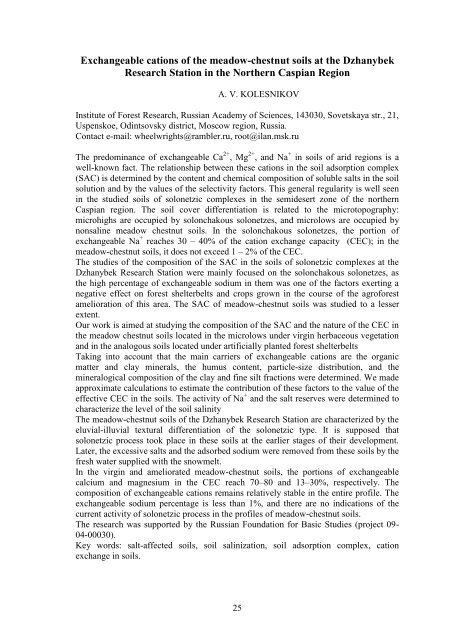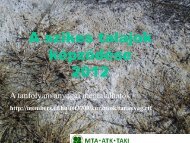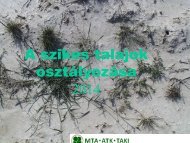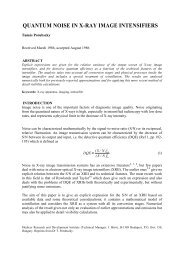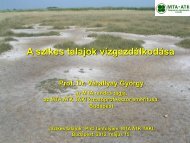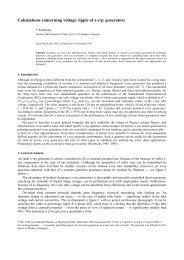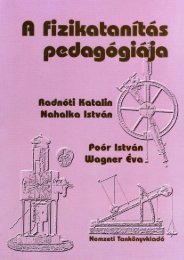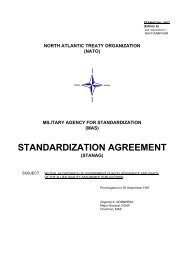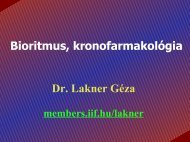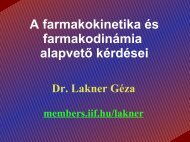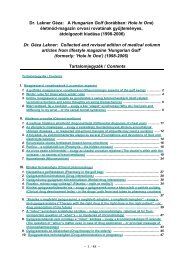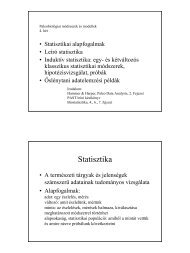Abstract form
Abstract form
Abstract form
You also want an ePaper? Increase the reach of your titles
YUMPU automatically turns print PDFs into web optimized ePapers that Google loves.
Exchangeable cations of the meadow-chestnut soils at the Dzhanybek<br />
Research Station in the Northern Caspian Region<br />
A. V. KOLESNIKOV<br />
Institute of Forest Research, Russian Academy of Sciences, 143030, Sovetskaya str., 21,<br />
Uspenskoe, Odintsovsky district, Moscow region, Russia.<br />
Contact e-mail: wheelwrights@rambler.ru, root@ilan.msk.ru<br />
The predominance of exchangeable Ca 2+ , Mg 2+ , and Na + in soils of arid regions is a<br />
well-known fact. The relationship between these cations in the soil adsorption complex<br />
(SAC) is determined by the content and chemical composition of soluble salts in the soil<br />
solution and by the values of the selectivity factors. This general regularity is well seen<br />
in the studied soils of solonetzic complexes in the semidesert zone of the northern<br />
Caspian region. The soil cover differentiation is related to the microtopography:<br />
microhighs are occupied by solonchakous solonetzes, and microlows are occupied by<br />
nonsaline meadow chestnut soils. In the solonchakous solonetzes, the portion of<br />
exchangeable Na + reaches 30 – 40% of the cation exchange capacity (CEC); in the<br />
meadow-chestnut soils, it does not exceed 1 – 2% of the CEC.<br />
The studies of the composition of the SAC in the soils of solonetzic complexes at the<br />
Dzhanybek Research Station were mainly focused on the solonchakous solonetzes, as<br />
the high percentage of exchangeable sodium in them was one of the factors exerting a<br />
negative effect on forest shelterbelts and crops grown in the course of the agroforest<br />
amelioration of this area. The SAC of meadow-chestnut soils was studied to a lesser<br />
extent.<br />
Our work is aimed at studying the composition of the SAC and the nature of the CEC in<br />
the meadow chestnut soils located in the microlows under virgin herbaceous vegetation<br />
and in the analogous soils located under artificially planted forest shelterbelts<br />
Taking into account that the main carriers of exchangeable cations are the organic<br />
matter and clay minerals, the humus content, particle-size distribution, and the<br />
mineralogical composition of the clay and fine silt fractions were determined. We made<br />
approximate calculations to estimate the contribution of these factors to the value of the<br />
effective CEC in the soils. The activity of Na + and the salt reserves were determined to<br />
characterize the level of the soil salinity<br />
The meadow-chestnut soils of the Dzhanybek Research Station are characterized by the<br />
eluvial-illuvial textural differentiation of the solonetzic type. It is supposed that<br />
solonetzic process took place in these soils at the earlier stages of their development.<br />
Later, the excessive salts and the adsorbed sodium were removed from these soils by the<br />
fresh water supplied with the snowmelt.<br />
In the virgin and ameliorated meadow-chestnut soils, the portions of exchangeable<br />
calcium and magnesium in the CEC reach 70–80 and 13–30%, respectively. The<br />
composition of exchangeable cations remains relatively stable in the entire profile. The<br />
exchangeable sodium percentage is less than 1%, and there are no indications of the<br />
current activity of solonetzic process in the profiles of meadow-chestnut soils.<br />
The research was supported by the Russian Foundation for Basic Studies (project 09-<br />
04-00030).<br />
Key words: salt-affected soils, soil salinization, soil adsorption complex, cation<br />
exchange in soils.<br />
25


